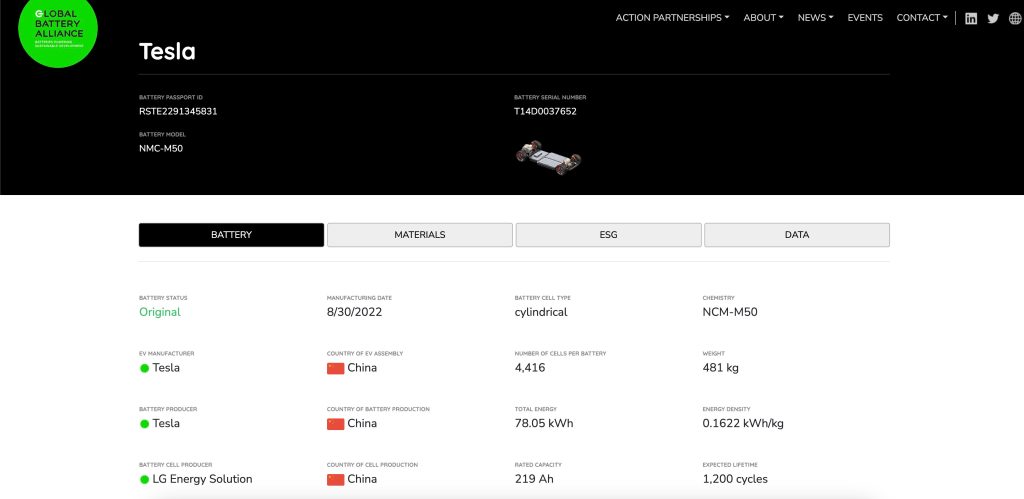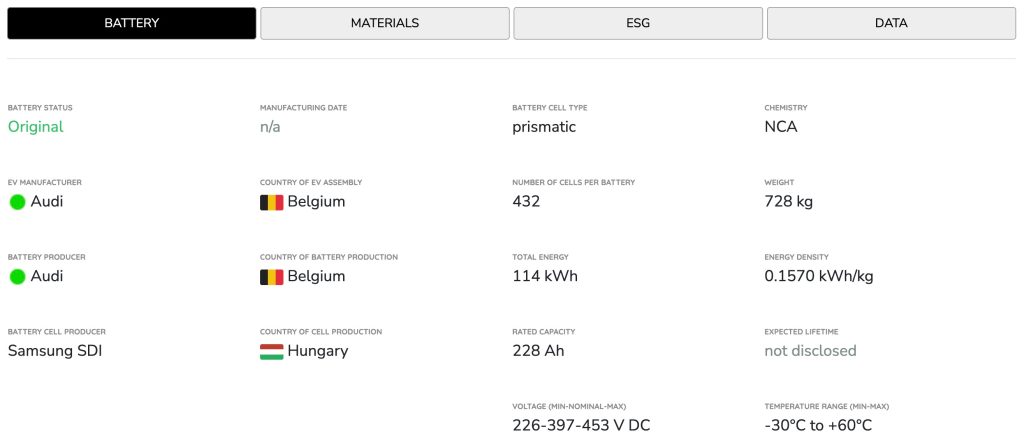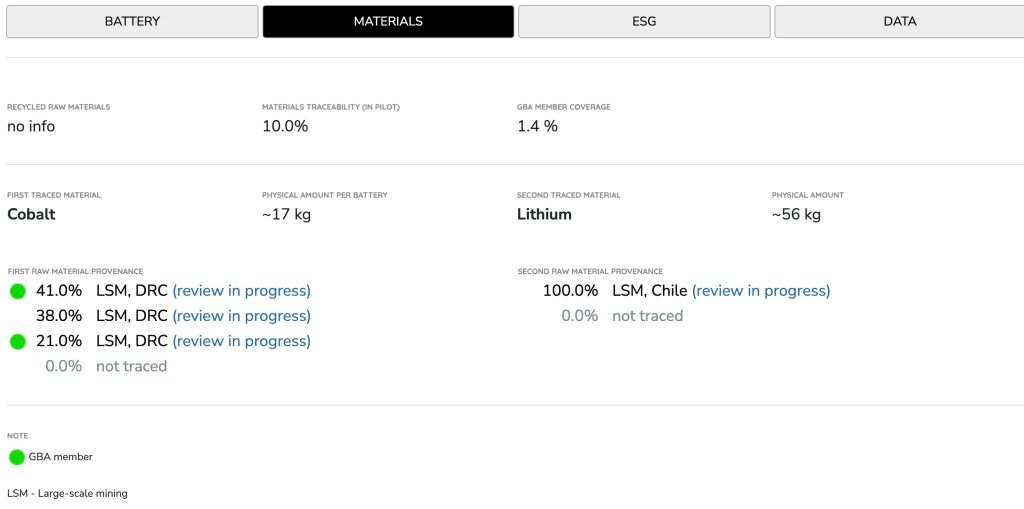
Tesla and Audi are the first two automakers to participate in the Global Battery Alliance’s battery passport proof-of-concept. You can take a look at what it looks like here.
As we recently reported, the Global Battery Alliance (GAB) is pushing a new solution called a “Battery Passport” to the problem of tracking battery materials.
GAB is an industry group made up of over 100 companies involved in the EV battery supply chain from mining companies like Glencore to automakers like Tesla and battery cell makers like LG. The group’s goal is to “help establish a sustainable battery value chain by 2030.”
One of the first steps in making a sustainable battery value chain is to understand where all materials in a battery cell come from, which is harder than one might think. A battery cell is mainly made up of a cathode, anode, separator, and electrolyte, and each of these parts is made of several different materials that need to be processed.
From mining to processing to assembly, it can be hard to know where every part of a battery cell came from, which is important to know to make sure the entire value chain is sustainable.
In November, we reported that a Tesla executive and an Investissement Québec director are leading the project.
Now GAB has announced that it has released the first proof-of-concept:
The Global Battery Alliance (“GBA”), the world’s largest multi-stakeholder organisation to establish a sustainable battery value chain by 2030, today launched the proof of concept for its Battery Passport at the World Economic Forum’s Annual Meeting in Davos.
Tesla and Audi are the first two automakers to participate in the proof-of-concept.
Tesla only did it for cobalt on a long-range battery pack built in China for now. Here’s what it looks like:

Tesla was able to confirm that 100% of the cobalt in the battery cells come from Glencore’s Kamoto Copper Company in the Democratic Republic of Congo:

As you can see, the report only accounts for about 1% of the battery materials in the battery pack, but the goal is to ultimately account for everyting.
You can check Tesla’s full proof-of-concept report here.
Audi also participated in the proof-of-concept, but it went a little more in-depth by adding lithium and accounting for about 10% of the pack materials.


You can check Audi’s full proof-of-concept report here.
FTC: We use income earning auto affiliate links. More.


Comments